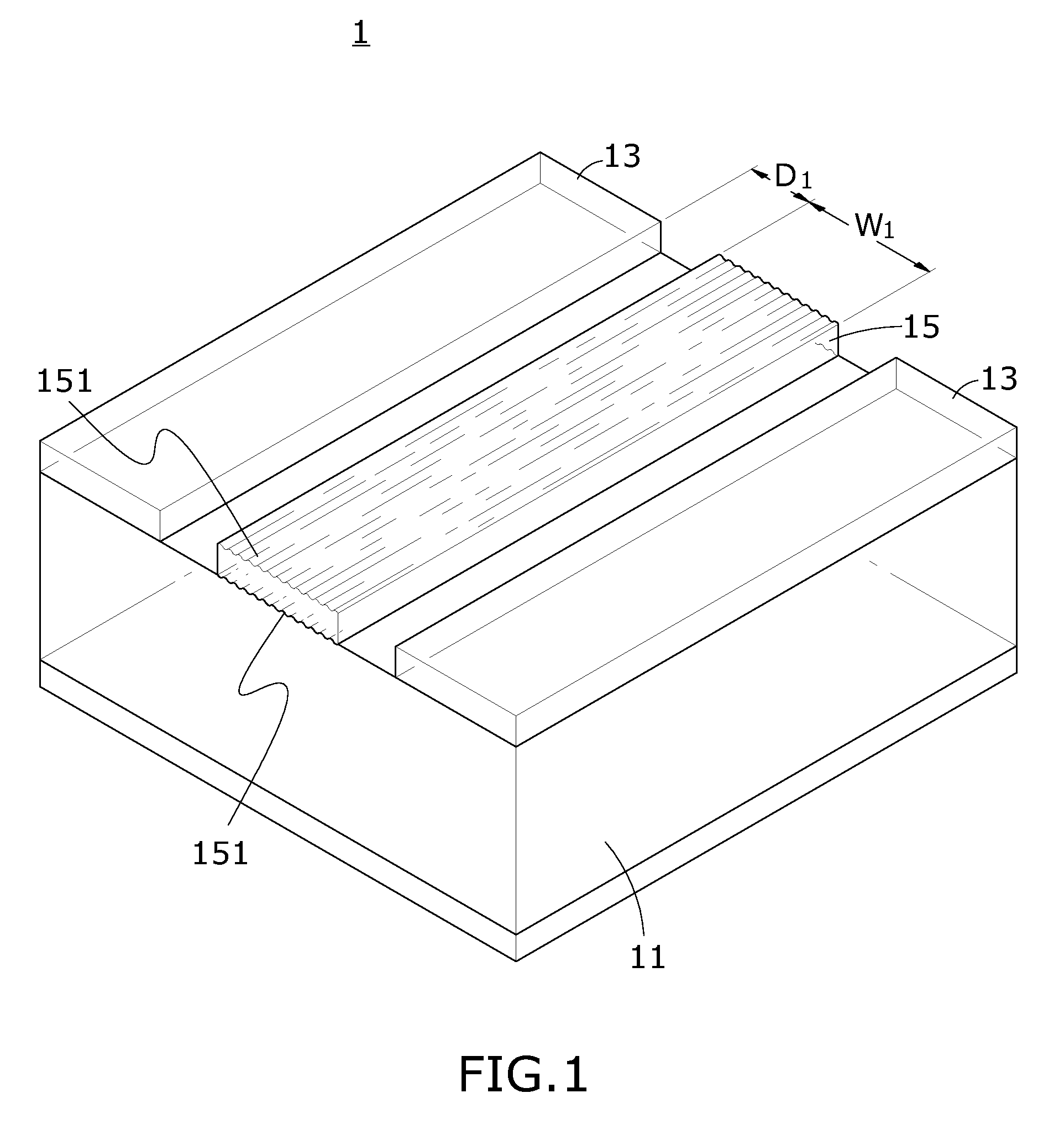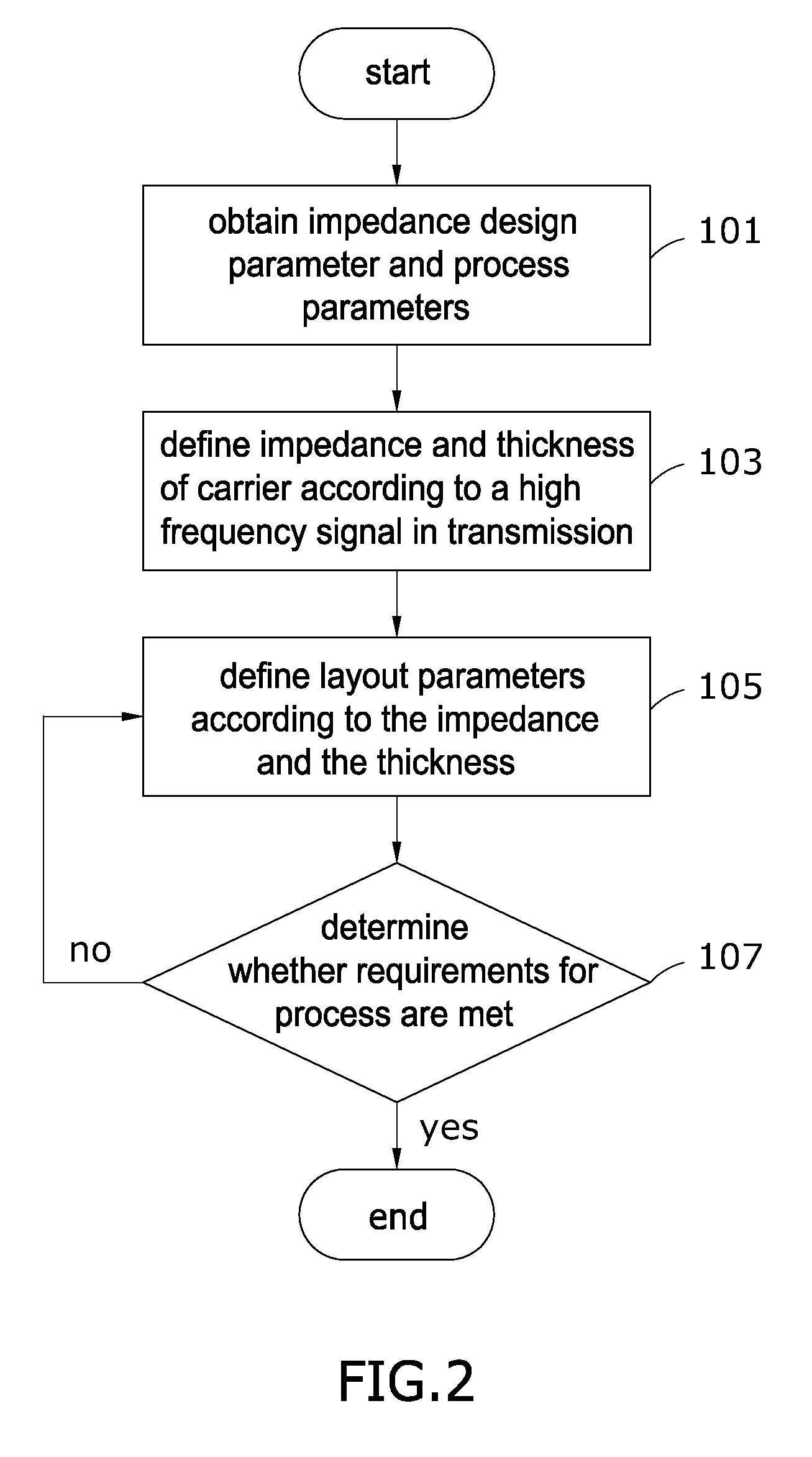Carrier for high frequency signals having conducting wires with roughness portions and a carrier layout method
a carrier and high frequency technology, applied in the field of signal transmission, can solve the problems of affecting the requirement of signal quality, increasing the area, and the inability of low-pass filter operation, and achieve the effect of increasing high-frequency loss and flexible design
- Summary
- Abstract
- Description
- Claims
- Application Information
AI Technical Summary
Benefits of technology
Problems solved by technology
Method used
Image
Examples
first embodiment
[0027]It should be noted that, in the first embodiment and the other embodiments, the carrier 1 is a circuit board, a bus line, and a flexible circuit board for use with communication products. The flexible circuit board is a flexible printed circuit board (flexible PCB), a flex-rigid PCB, or an equivalent circuit board.
[0028]The substrate 11 is a substrate with-high loss tangent (tan δ), such as an epoxy glass (FR4) substrate, or any other substrates with high loss tangent.
[0029]The reference planes 13 are formed on the substrate 11 and are power planes, ground planes, or other planes. In the first embodiment, the signal transmission structure comprises the reference planes 13 and the conducting wires 15. However, persons skilled in the art understand that the signal transmission structure is not limited to one described in the first embodiment.
[0030]The conducting wires 15 are formed on the substrate 11 and formed with roughness portions 151, and are of width W1. In the first embo...
second embodiment
[0048]Referring to FIG. 4, which is a schematic view of a layout in FIG. 3, the conducting wires 15′ have trace width denoted by width W2 and spacing denoted by distance D2, and a plurality of through holes 19 are formed in the reference planes 13. However, persons skilled in the art understand the positions of the through holes 19 are not limited by the
[0049]Of course, the present invention is always open to variation. For instance, a combination of at least one of the layout parameters can be provided. Referring to FIG. 5, the conducting layer 17 covers conducting wires 15″, the reference planes 13, and the substrate 11 in a continuous manner. Also, the drawing shows the following: the substrate 11 is of height H; there is distance D3 between the reference planes 13 and the conducting wires 15″; the conducting wires 15″ are of thickness T and are trapezoid-shaped, as the upper side and the lower side of the conducting wires 15″ are of width W3 and width W4, respectively, wherein w...
PUM
 Login to View More
Login to View More Abstract
Description
Claims
Application Information
 Login to View More
Login to View More - R&D
- Intellectual Property
- Life Sciences
- Materials
- Tech Scout
- Unparalleled Data Quality
- Higher Quality Content
- 60% Fewer Hallucinations
Browse by: Latest US Patents, China's latest patents, Technical Efficacy Thesaurus, Application Domain, Technology Topic, Popular Technical Reports.
© 2025 PatSnap. All rights reserved.Legal|Privacy policy|Modern Slavery Act Transparency Statement|Sitemap|About US| Contact US: help@patsnap.com



